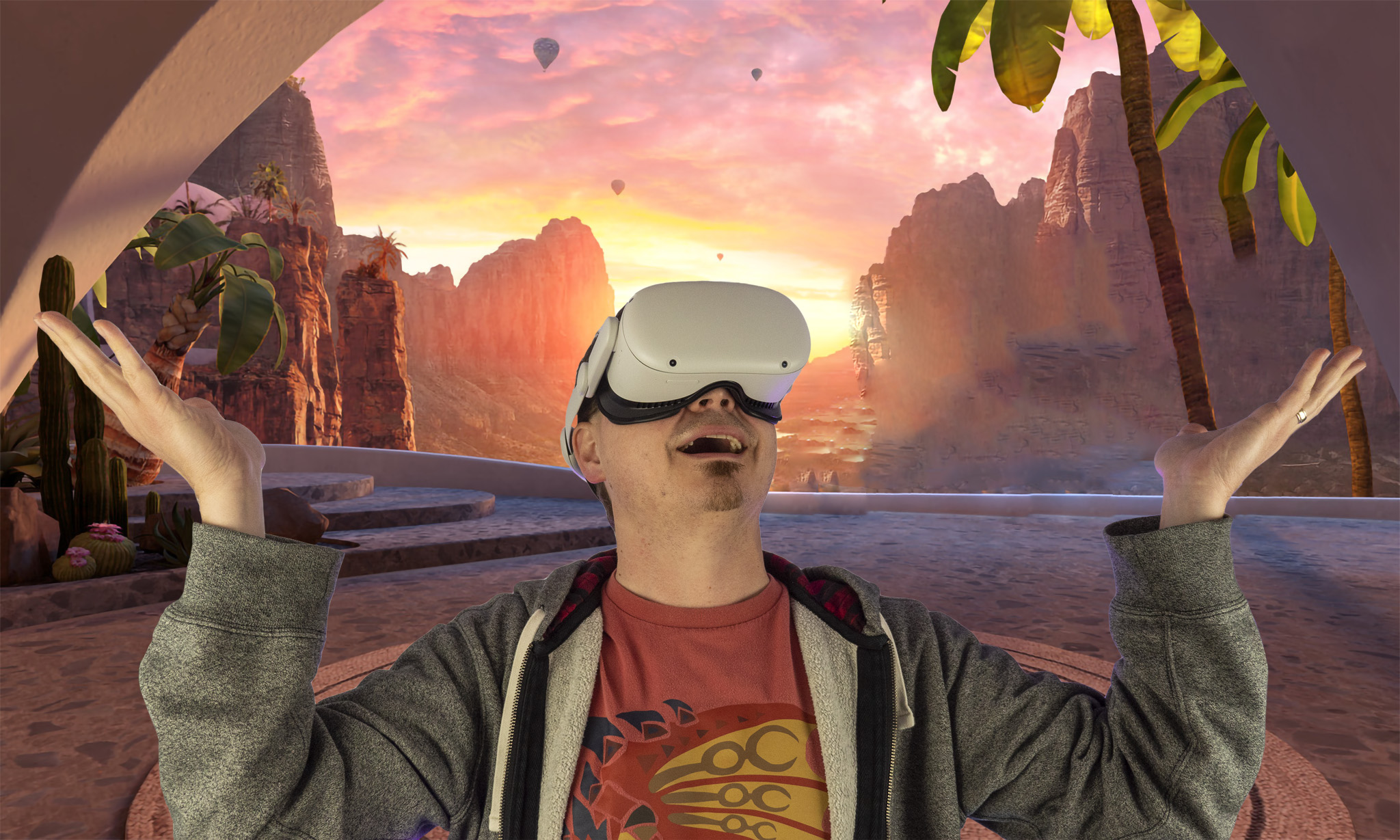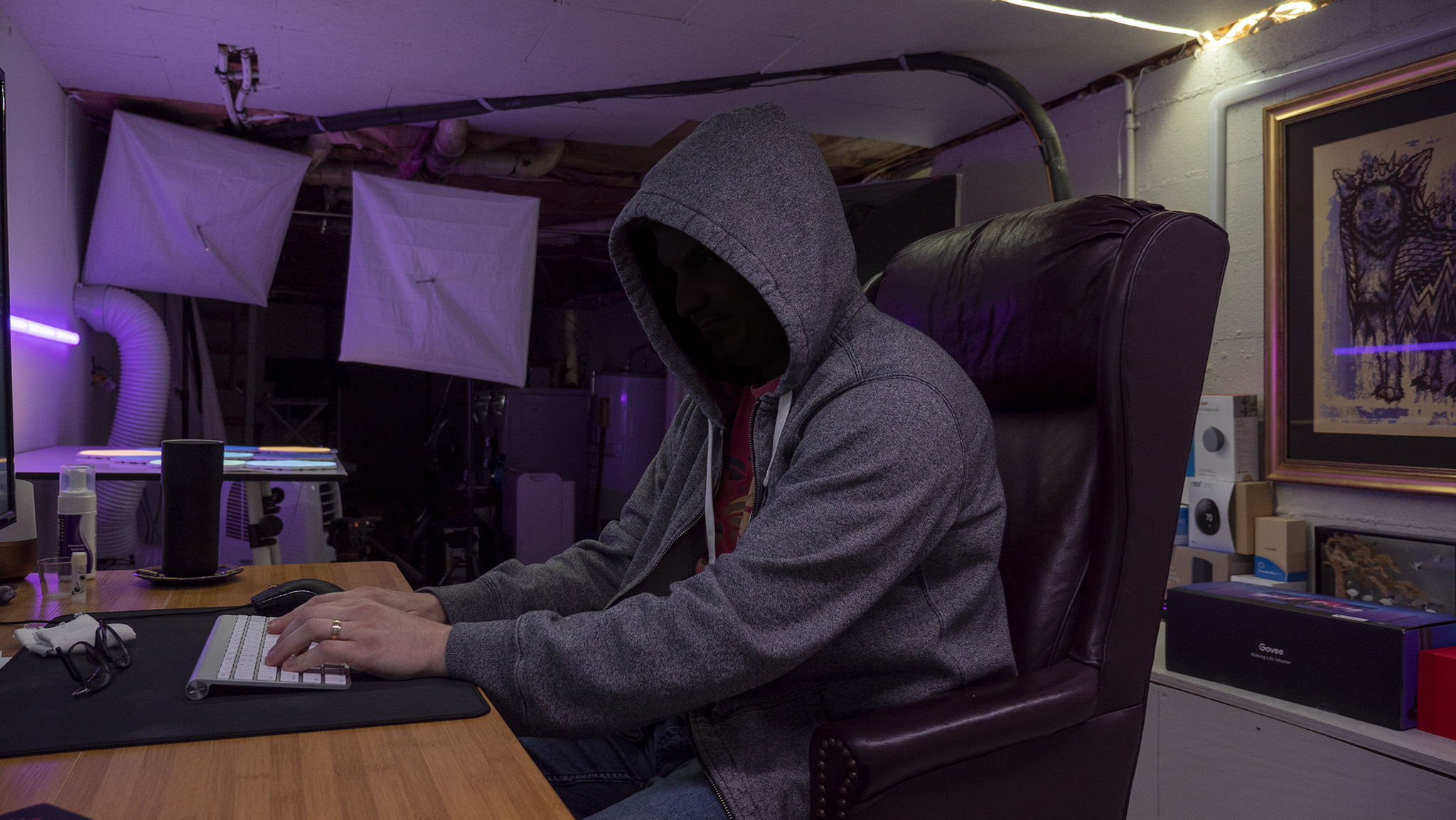Is the Metaverse really necessary?
Yes, but not as you might imagine it.

Doubtless, when most people hear the term “metaverse,” they probably envision some sort of futuristic digital world where a person can be anyone or anything they want. That, of course, is thanks in part to science fiction — particularly the likes of shows like Battlestar Galactica’s Caprica prequel and movies or movies like Ready Player One — but the metaverse, as a concept, is so much more than that.
If we’re asking the question “Is the Metaverse really necessary?" by using a proper noun for the Metaverse then, no. A single one-size-fits-all solution for a digital world that’s designed to augment — or even replace, in some cases — our own real world is asking for trouble. If we’re delving into the idea that a metaverse is simply a collection of digital and real-world ideas melded into a cohesive space for people to socialize in then, yes, the metaverse is the future of human interaction.
Dispelling myths

Part and parcel to the concept of a metaverse is the idea of digital ownership. Games like Fortnite, Minecraft, Roblox, and many others have created a digital world where people can build things and “own” digital items, but the term “ownership” here means something very different from how we think of it in the real world.
Even in special events or for special products — like Coca-Cola’s new pixel-flavored soda — the connection between owning a physical drink from the company and using it in Fortnite is completely disconnected. One has nothing to do with the other and, even if you were to complete all the challenges in Coca-Cola’s special Fortnite world, you’re not going to be able to turn in your accomplishments for a real-world sugary drink.
The problem with NFTs, in particular, is that the term has been hijacked by con artists and snake oil salesmen.
But real-world rewards for digital accomplishments isn’t a core issue. Rather, digital ownership as a concept is. Ownership in these games is tied exclusively to the account you opened when you began playing the game. If you were to lose access to this account — or have your account banned — you lose access to everything you spent real money on. Also, these digital goods cannot be carried from one game to another unlike how an object in the real world is transportable between locations.
The obvious solution to this is to provide a way to verify ownership outside of any one type of account system and, to a much more difficult degree, to allow digital items to be carried through digital worlds, no matter who makes the world.
NFTs, or non-fungible tokens, are likely the best way that’s yet been invented to assert ownership over a digital object. The problem with NFTs, in particular, is that the term has been hijacked by con artists and snake oil salesmen. NFT has become a bad word in modern digital culture, but the concept is still good so long as it can be used properly.
Get the latest news from Android Central, your trusted companion in the world of Android
I’m not talking about buying stupid pictures of monkeys. I’m talking about using the concept of an NFT — a digital receipt, of sorts — to prove real ownership of intangible digital objects. This could mean anything from the skin on your digital avatar to a plot of “land” in a digital metaverse.

Having a way to verify ownership beyond your account has to be laid as the groundwork to convince people that investing time and money into a digital world is actually worth it.
In one example, a mixed reality metaverse called QuestoWorld (pictured above) uses a limited number of NFTs to assert “ownership” of a digital portion of a real-world city. Players can build real-world quests on top of one of these realms — a term the game uses to refer to digital property — which involves players walking around the real-world location of a realm solving puzzles and riddles. Quests are paid games, a portion of which goes to the person who owns the realm on top of which the quest is built.
QuestoWorld is more like the ARGs (alternate reality games) of yesteryear than a broader metaverse concept that Zuckerberg spun at last year’s Connect conference. In many ways, it's a bit like Niantic’s Ingress, a game where players walk around the real world to do battle in the digital world. Niantic eventually birthed Pokemon Go as an evolution of this concept.
Having a way to verify ownership beyond your account is an important beginning and, if we’re to take the metaverse concept seriously, has to be laid as the groundwork to convince people that investing time and money into a digital world is actually worth it.
Exchanging real money for digital currency that’s unique to a specific game is just fine as well, but a proper metaverse with its own currency concept would need to provide a way to exchange that money back to another currency if the user deems it necessary. Again, if this is going to be an augmentation of reality, then digital currency should be exchangeable in the same manner as exchanging currency in a foreign country.
The trouble with anonymity (or, the need for actual identification)

Identification goes hand-in-hand with any concept of ownership. Without proper identification, how can anyone assert ownership of anything at all? One of the most powerful — and subsequently, dangerous — parts of the Internet is the ability to remain anonymous in a way that’s physically impossible outside of digital spaces. It’s easy enough to register a fake account on a forum or other social setting and say as much inappropriate or hurtful things as someone wants, and it’s done all the time.
If the metaverse is to be more successful as a social construct than the current structure of the Internet, it has to have a cohesive way to identify individuals and hold them accountable for actions that are deemed inappropriate by society. You wouldn’t expect to shout racist or sexist things from a street corner and not be confronted, and that should be no different in a metaverse.
Without proper identification, how can anyone assert ownership of anything at all?
When I spoke to Anshel Sag, a senior analyst at Moor Insights & Strategy about a related topic — that’s the PlayStation VR2 — we discussed the idea of authentication in digital space and how it could be better than the current crop of concepts. To sum it up, using biometric authentication to ensure actual identification is the key.
Sag says, “Irises are actually more secure than fingerprints. They’re more unique and harder to spoof. So when you put on the headset, it automatically logs you in. Then, when you take it off, it automatically logs you off so no one can ever make an unauthorized purchase again even if they had your password.”
In effect, your irises would need a two-factor authentication method that ensures you are who you say you are. This could be possible, at least on the PS VR2, because the system is shipping with eye-tracking sensors. It’s not yet known if Sony could use them for this purpose, but it presents a very palpable way to ensure you are the owner of your digital goods and no one can steal your account and take those goods away.
There needs to be more accountability over actions made in the metaverse than there is on the Internet as we know it now.
Similarly, when I spoke with David Whelan, CEO of Engage XR, about the metaverse concept, he talked about the need to separately create spaces that are more “serious” from ones that are more casual. As Engage XR is primarily an enterprise metaverse creation company, it makes sense for Whelan and his company to work to ensure that commercial metaverses — whether that’s working remotely in a digital manner or visiting a virtual trade show — are taken as seriously as a real-world commercial space.
As Whelan puts it, current platforms like Horizon Worlds aren’t secure enough despite having the requirement of a Facebook account and restrictions on users under 18. Whelan says one of the core tenants of the Engage XR platform is to create more accountability over actions made in its metaverse space.
“So that's why Facebook, in particular, uses us for their client-facing meetings. They don't use their platform that they're currently working on because they're afraid of a top-line executive going into Facebook Horizons. As an example, they're standing next to a 16-year-old kid getting absolutely abused. That won’t happen on our platform.”
The killer app (it’s not the Oasis)

While Ready Player One’s Oasis paints a vivid picture of a dystopian society where the metaverse is an individual’s only hope of achieving any kind of success, that singular realm of possibility isn’t a great concept for a real-world delivery. Meta has been having trouble keeping players coming back to its Horizon Worlds metaverse for this very reason. While it’s great to have a world where players can build their own worlds, having a single company control the outcome is off-putting.
Right now, we’re in the early 90s Internet-equivalent stage of the Metaverse.
I think metaverses that encourage open interoperability will end up reigning supreme in the end. VRChat is one such example, and its organic growth over the years has proven the platform’s success goes beyond the control of any one company or individual. Players who are looking for an alternate world to live in effectively, can build their own and meet up with others in these spaces. Avatars can be imported from other popular digital platforms, helping to create a cohesive identity for a player as they traverse the digital world.
On the flipside, concepts like REK, a mixed-reality sports concept that’s launching in beta later this month, will provide players with an alternate way to stay physically active without throwing a ball or lifting weights at a gym. Like traditional sports, Rek is designed to be a platform where folks can tune in to live broadcasts of games, many of which defy the concept of sports that rely on the use of a ball or a goal.
The metaverse isn't going anywhere
In short, the metaverse isn’t a single concept that’s going to be magically realized one day. Whelan pointed out to me that back in the 90s when the Internet was being built, you needed to be on AOL in order to find anything — or be found, as a business. AOL was the gatekeeper, and while that seemed OK at the time, the lessons learned from the birth and evolution of the Internet proved that the AOL modicum strategy wasn’t the long-lasting one.
If anything, Google’s creation of the open-sourced Chromium is the kind of winning strategy a metaverse company needs to consider. Building a tool that lets you access a wider digital world — no matter if that access is on a VR headset or one of the best smartphones — is almost certainly the right way to go.
Right now, we’re in the early 90s Internet-equivalent stage of the Metaverse and while the direction of the evolution of the concept is anyone’s best guess, one thing is clear: the metaverse is here to stay, and it will soon be as ubiquitous as the Internet of today.

